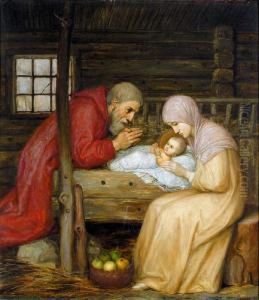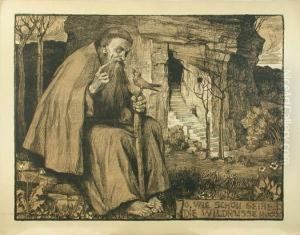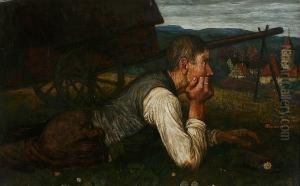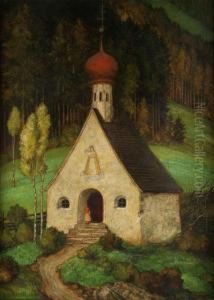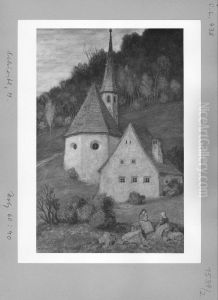Matthaus Schiestl Paintings
Matthäus Schiestl was an Austrian painter, graphic artist, and illustrator, known for his religious motifs, genre scenes, and historical depictions. Born on May 19, 1869, in Vienna, Austria, Schiestl showed an early interest in art. He pursued his passion at the Academy of Fine Arts Vienna, where he studied under renowned artists such as Christian Griepenkerl and Siegmund L'Allemand.
After completing his formal education, Schiestl embarked on a career that would see him contribute to various artistic fields. He was particularly drawn to religious themes and was known for his ability to imbue his works with a sense of spirituality and emotion. His illustrations often appeared in books and periodicals, where his detailed and evocative style garnered attention. Schiestl's works were characterized by a combination of realism and a certain decorative flair, which was typical of the period's transition from traditional academic art to the burgeoning Art Nouveau movement.
Throughout his career, Schiestl received several honors, including being appointed as a professor at the Academy of Fine Arts Vienna. His contributions to art were not limited to his own creations; he also had a significant influence on his students, some of whom would go on to become notable artists in their own right.
Schiestl's work was part of the art movements of his time, which were marked by a change in aesthetics towards more modern and expressionistic styles. While his work maintained elements of 19th-century realism, he was open to the influences of early 20th-century art, which can be seen in his later works. Despite changes in popular styles, he remained committed to his thematic focuses, particularly in his religious artwork.
Matthäus Schiestl passed away on April 23, 1939, in Vienna. His legacy is preserved in the collections of various Austrian museums and in the religious institutions that commissioned his works. Schiestl's contributions to Austrian art are remembered for their technical skill, emotive power, and the artist's dedication to his subjects.
